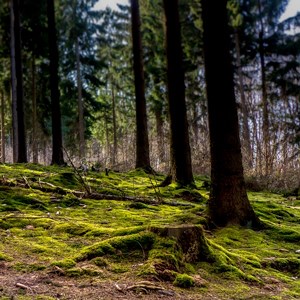Facts:
Project period: 2022
Project leader: Therese Löfroth, SLU
Participants: Therese Löfroth, SLU, Jörg Brunet, SLU, Line Djupström, Skogforsk
Partners: SLU, Skogforsk, Umeå University
Funding: Future Forests

Un-even aged forestry methods are advocated because they are considered good for biodiversity. One problem, however, is that uneven-aged methods also lead to a small amounts of dead wood and old trees, and therefore environmental considerations are also required in selectively logged stands. In this project, we find out how consideration should best be designed in uneven aged forestry.
Uneven aged forestry methods have recently received much attention in Sweden and knowledge of how such methods should be implemented to provide both economic exchange and benefit biodiversity is demanded by forest owners, officials and practitioners and is on the political agenda both nationally and internationally.
Uneven aged forestry is seen by some customers as a more environmentally friendly alternative than traditional clear-cutting. However, uneven aged forestry poses similar problems for biodiversity as clear-cutting, as the trees are harvested before they have had time to develop characters important for biodiversity, which in turn means that the amount of dead wood will be small.
The general consideration should be similar to that of clear-cutting and includes adaptation to consideration-demanding biotopes, saving of nature value trees and tree groups or eternity trees, creation of high stumps and edge zones towards watercourses. The effect of consideration in selectively cut stands can be expected to differ from the effect on clear-cut, for example because the retained and created substrates will be largely shaded.
However, there is no scientific summary of what these effects are and how general consideration in uneven aged forestry should be designed to benefit biodiversity in the best way and contribute to green infrastructure while it is rational to plan and implement in practical forestry. Which methods and measures are most suitable can also differentiate between different forest types, for example between boreal coniferous forest and deciduous forest in temperate areas.
In order for uneven aged methods to be implemented to a greater extent than today, it is also required that there is competence among both consultants and contractors. Today, it is unclear what this competence looks like and what competence-enhancing measures may be required to meet increased demand from forest owners.
The purpose of this project is to compile the knowledge that exists about consideration in uneven aged forestry and to map the level of knowledge of advisers and practical contractors.
We will focus on the following issues:
Project period: 2022
Project leader: Therese Löfroth, SLU
Participants: Therese Löfroth, SLU, Jörg Brunet, SLU, Line Djupström, Skogforsk
Partners: SLU, Skogforsk, Umeå University
Funding: Future Forests
Teresia Borgman
Communications Officer, Future Forests
teresia.borgman@slu.se